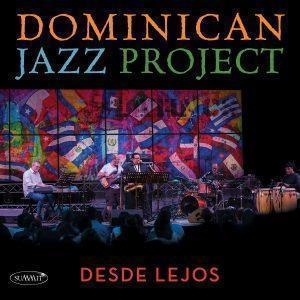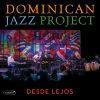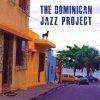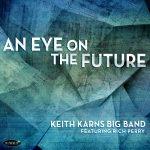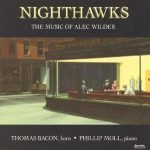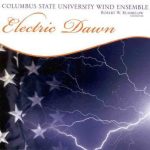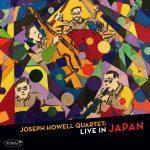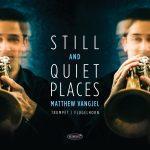Desde Lejos – Dominican Jazz Project
“…The best way to listen to Desde Lejos by the Dominican Jazz Project is by cranking up the volume on your stereo…” -Latinjazznet
MUSICIANS:
Sandy Gabriel, saxophones;
Rahsaan Barber, tenor saxophone (track 2)
Mayquel González, trumpet (tracks 5,6,7)
Guillo Carias, clavietta (tracks 4,5,8)
Carlos Luis, guitar, voice (tracks 4,8)
Stephen Anderson, piano (accordion track 3)
Ramón Vázquez, bass
Craig Butterfield, bass (tracks 1, 3)
Jason Foureman, bass (track 4)
Guy Frómeta, drums
David Almengod, percussion, voice
Juan Álamo, percussion (tracks 3,6)
Marc Callahan, coro (track 2)
The seed for the Dominican Jazz Project was planted in 2014 when Stephen Anderson (Professor and Director of Jazz Studies at University of North Carolina) went to Santo Domingo with clavietta player Guillo Carias for the first annual Jazzomania Festival. There, Anderson met and formed close friendships with Sandy Gabriel (saxophone), Guy Frómeta (drums), David Almengod (percussion, voice) and others. Besides performing at clubs and festivals, their 2016 eponymously-titled release was nominated for a Grammy Award. Now, recorded remotely during the 2020 pandemic, Desde Lejos (meaning “From Afar”) presents an enchanting jazz repertoire full of originality, imagination, joy and good creative energy. The musicians are also joined by solid rhythm players on bass, drums, percussion and coro.
Besides the artistic expression and excellent musicality on the album, there’s also an intellectual side because Anderson’s study of Dominican traditional music discovered a variety of lesser known grooves not commonly played in Latin jazz today outside of the Dominican Republic. Anderson’s five compositions, like “Sin Palabras” and “Un Cambio de Ritmo” on Desde Lejos evolved from his study of Dominican piano tumbao patterns, as well as other traditional grooves such as the Mangulina, Pambiche, Ga-Ga, and Palo. “Ritmos de Baní,” is based on the Sarandunga rhythm from Baní, a town not far from Santo Domingo.
Guillo Carias penned “Si Tu Supieras” and it’s a nice showpiece for his clavietta, as well as Mayquel Gonzalez’s trumpet that appears on three tracks. The clavietta, a type of melodica, sounds a bit like a chromatic harmonica. Guitarist Carlos Luis’ contributions, “Una Mas” and “Como un Rayo Ciego” provide a nice dynamic switch (from the more upbeat jazz fusion sounds) to some that feature his earthy vocals and balladic reflections. The Dominican Jazz Project emphasizes a sophisticated and elaborate style of congenial music with a message, and Desde Lejos has expressions that are purely Dominican but also travel well abroad.
-Joe Ross for Roots Music Report
REVIEW:
Exciting and percolating pulses are produced by the Dominican Jazz Project, boasting of a mix of drums, percussion and basses galloping under post bop horns along with passionate vocals. David Almengod brings earthy voice along with Rahsaan Barber’s tenor sax and Stephen Anderson’s piano on “Ritmos de Bani” while Carlos Ruis serenades in the plaza accompanied by Anderson’s accordion and his own guitar strings on the tender “Como Un Rayo Ciego” and “Una Mas”. There’s a rotating team of bassists, with some hip electric work by Ramon Vazquez leading into the sizzling “Pero Aun No es el Fin” with Craig Butterfield’s acoustic strings pulsating under Sandy Gabriel’s tenor on the modern sounding “Sin Palabras”. More sizzling than fried peppers and onions.
-George Harris for Jazz Weekly
REVIEW:
Since the Dominican Jazz Project’s debut album “The Dominican Jazz Project” (Summit Records, 2016) the band has been very productive, performing at festivals and jazz clubs and giving masterclasses at universities in the United States and the Dominican Republic. 2020 was to be the year when they would return to the recording studio, but of course the COVID-19 pandemic made in-person recording nearly impossible. Not wanting to delay their plans, they opted to record remotely instead— hence the album’s title “Desde Lejos” (From Afar).
Pianist Stephen Anderson again contributes the lion’s share of the compositions, and his “Fuera de la Oscuridad” opens the album with a rush of fast tempo Latin jazz music. The composer’s piano solo is a highlight, along with solos by saxophonist Sandy Gabriel and drummer Guy Frometa. Guitarist/composer/vocalist Carlos Luis also makes a return appearance, contributing his guitar and voice to the ballads “Como un Rayo Ciego” and “Una Más.” Both tracks also feature Guillo Carias on clavietta, a melodica-like reed instrument (his contributions were recorded in North Carolina, while Anderson remained outside to protect this icon of Dominican jazz who is now in his 80s). Carlas is also represented as both composer and lead voice on “Si Tu Supieras” (balanced by trumpeter Mayquel Gonzalez).
The band suffered a huge loss with the passing of bassist Jeffry Eckels , who had been significantly involved in the project from the start. The album includes his composition “Siempre Adelante,” which had been planned before his death (featuring Gabriel’s soprano saxophone, along with electric piano and trumpet), as well as Anderson’s homage “Sin Palabras” (with Andrson on both accordion and piano) . Despite all of the challenges, the album is a worthy successor to the debut album—as well as a reminder of the power of music and brotherhood.
-Mark Sullivan for AllAboutJazz.com



